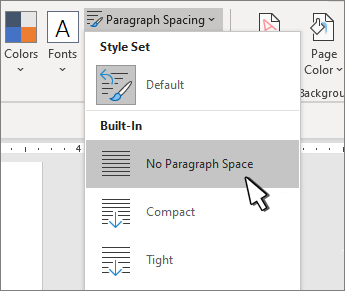
#HOW TO CREATE A QUICK STYLE SET IN WORD 2010 HOW TO#
Here’s how to use these components efficiently, without changing the default configuration: It too can prove frustrating if the list is long, but the AutoComplete feature helps, where you can type the style’s name for quicker access.įigure C The Styles pane lists recommended styles. You could also display the Apply Styles dialog (see Figure B) and choose a style from the drop-down list. Depending on the pane’s configuration, you stand a good chance of not finding the style you want. If the style you want isn’t one of the visible thumbnails, click the Styles dialog launcher and choose from the list shown in Figure C. doc versions) offers the most efficient route to applying a style if the style is visible. The Quick Styles gallery (not supported by. Because they don’t know how to manage styles, they don’t expand their knowledge and therefore their use of styles. Most users run into trouble with the interface components either they can’t find the style or the list is too long to be useful. (In Word 2003, use the Style drop-down on the Formatting menu.)įigure B Use the keyboard for quick access to styles. Then, choose a style from the Style Name drop-down. For keyboard enthusiasts, press ++ to display the Apply Styles dialog shown in Figure B. With Live Preview enabled, you can hover over a style and see how it looks in the document before applying it. Then, click a style in the Quick Styles gallery in the Styles group on the Home tab. To use the mouse, select the text or click inside a paragraph.

(We won’t discuss these advanced features in this article.) Quick access to styles Do you want to do so manually by finding (and perhaps missing) each title and then making the change–or would you rather modify a style once? You can do the latter if you apply a title style to the chapter titles.īeyond normal formatting, if you plan to take advantage of some of Word’s more advanced features–such as outlining, the table of contents, and so on–you need to know that these advanced features rely on proper application of Word’s built-in styles, but there’s more to styles than the formatting you see. For instance, let’s suppose you’re working in a long document with many chapter titles, and you want to change the font for them all. When working with long, heavily edited documents, styles can help. By direct formatting, I mean selecting text and manually applying italics, bold, or some other format. In a short letter or memo, direct formatting is fine. You may never need to move beyond Word’s default styles. Word applies the Normal style ( Figure A) as you enter text. I mention these three to be comprehensive, but we won’t discuss them further in this article. Lists: List styles apply to bullets, numbers, indentation, and other list formats.


A character style applies only to what you select, whereas a paragraph style formats whole paragraphs. In Word 2003, choose Styles and Formatting from the Formatting menu to display the Styles and Formatting task pane.įor the most part, you’ll work with two types of styles: character and paragraph. These attributes change from one version to another, so don’t worry if your Normal style isn’t exactly the same. As you can see in Figure A, Normal claims some of the following format attributes:įigure A Normal is Word’s default text style. To see what that really means, formatting-wise, right-click Normal in the Quick Styles gallery (in the Styles group on the Home tab), and choose Modify. When you open a blank document and start typing, you’re using a style named Normal. Word comes with oodles of them, and you can create your own. Style basicsĪ Word style is a set of formatting instructions. There’s no downloadable example file for this article. Most of the features discussed in this article aren’t supported by the earlier. This article uses Word 2010, but I’ll supply instructions for other versions when significantly different. Because the Quick Styles gallery offers the quickest route, I’ll then show you how to customize this gallery by adding the styles you use most often. In this article, I’ll show you how to access Word’s built-in styles using the Quick Styles gallery, the Styles pane, and the Apply Styles dialog. There are easy ways to access styles, but sometimes the volume and list order are less than helpful.

Some users find Word’s built-in styles difficult to apply and manage. Instead, learn how to manage them, so you can put them to work for you.


 0 kommentar(er)
0 kommentar(er)
